
Key Points
- Strong Breadth in the Energy Sector as Support Is Tested
- NYSE Advancing-Declining Volume Line Breaks Its 50-Day Moving Average
- NYSE New Lows Take a Turn to the Downside
- S&P 500 Breadth Metrics Are Better in the Short-Term
- Small Cap Breadth Moves Higher Across the Board
Chart in Focus
The S&P 500 Energy Index is testing support at the recent breakout level after a strong move up from the August lows. At the same time, the percentage of stocks in the index trading above their respective 50 and 200-day moving averages stands at 100%. Above 420, the odds favor an attack on the highs seen before the pandemic, near 460.
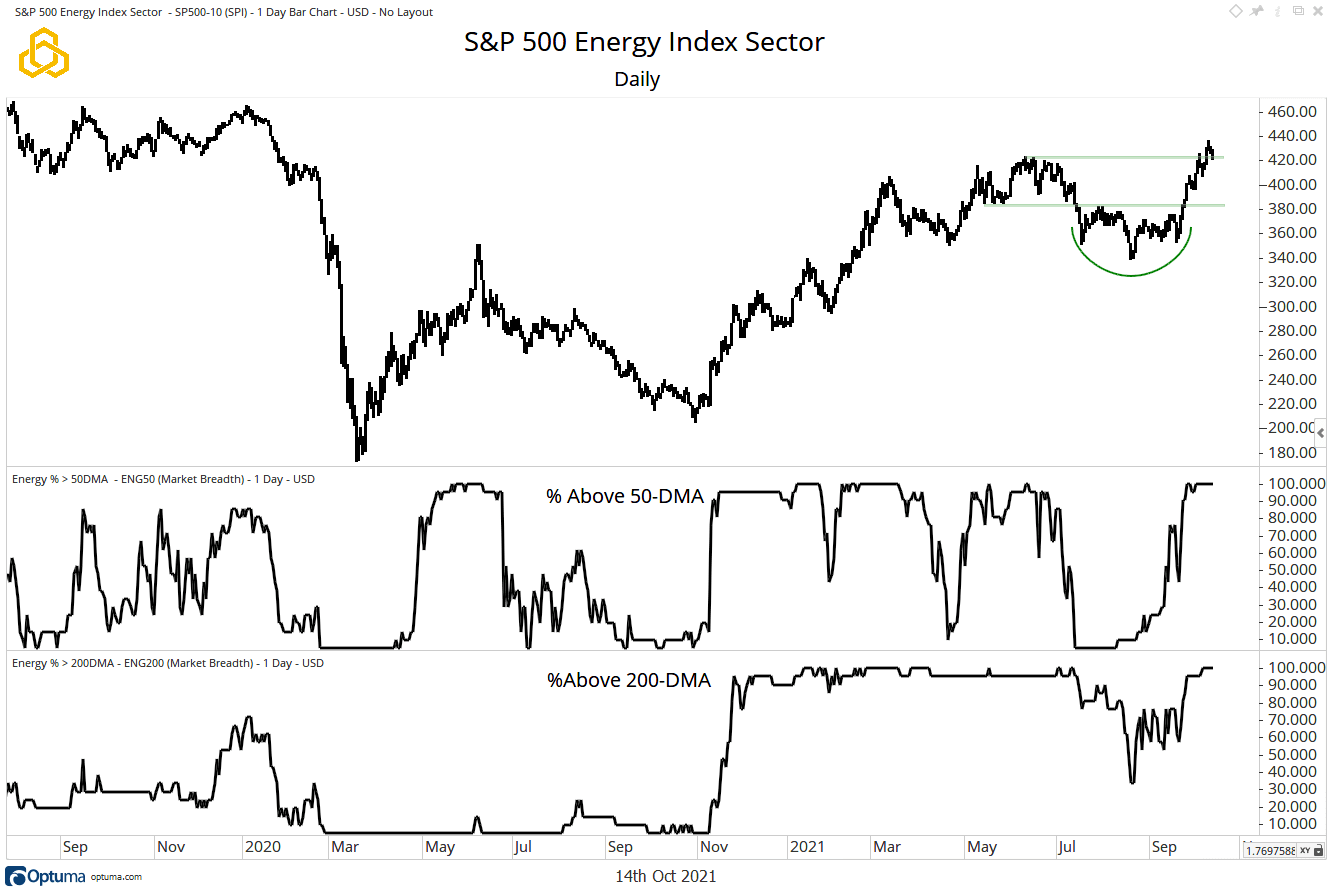
NYSE Breadth
The NYSE Advance/Decline Line is testing the underside of the 50-day moving average after holding support since July. Breaking above the moving average would build on the improvement in this metric that we highlighted last week when we called out the small bullish divergence. This could also be a precursor to the S&P 500 breaking back above its 50-day moving average.
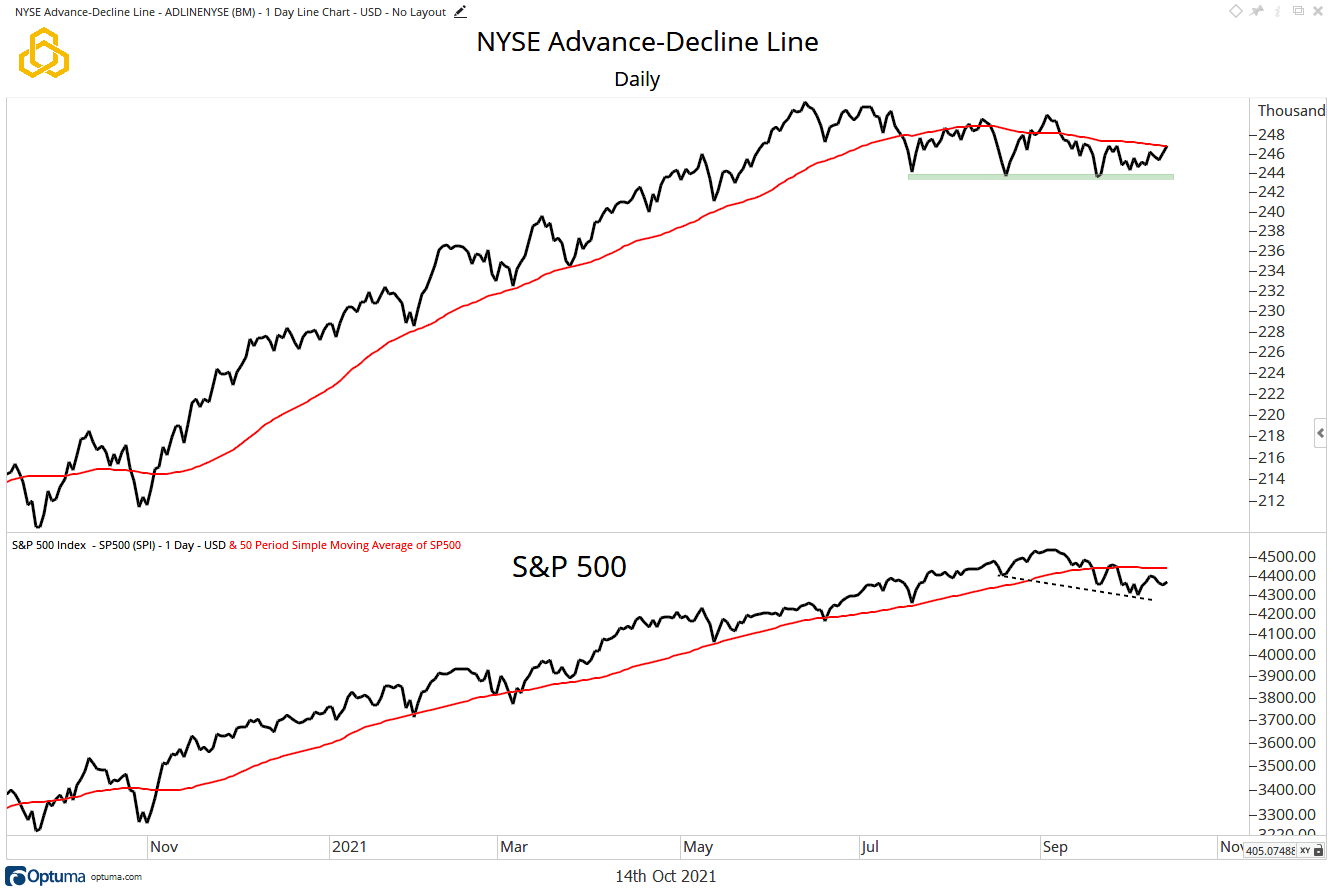
On the heels of the bullish divergence that we called out in this Note last week, the NYSE’s Advance-Declining Volume Line has broken above its 50-day moving average. Further strength for this indicator increases the odds that the S&P 500 will retake its moving average.
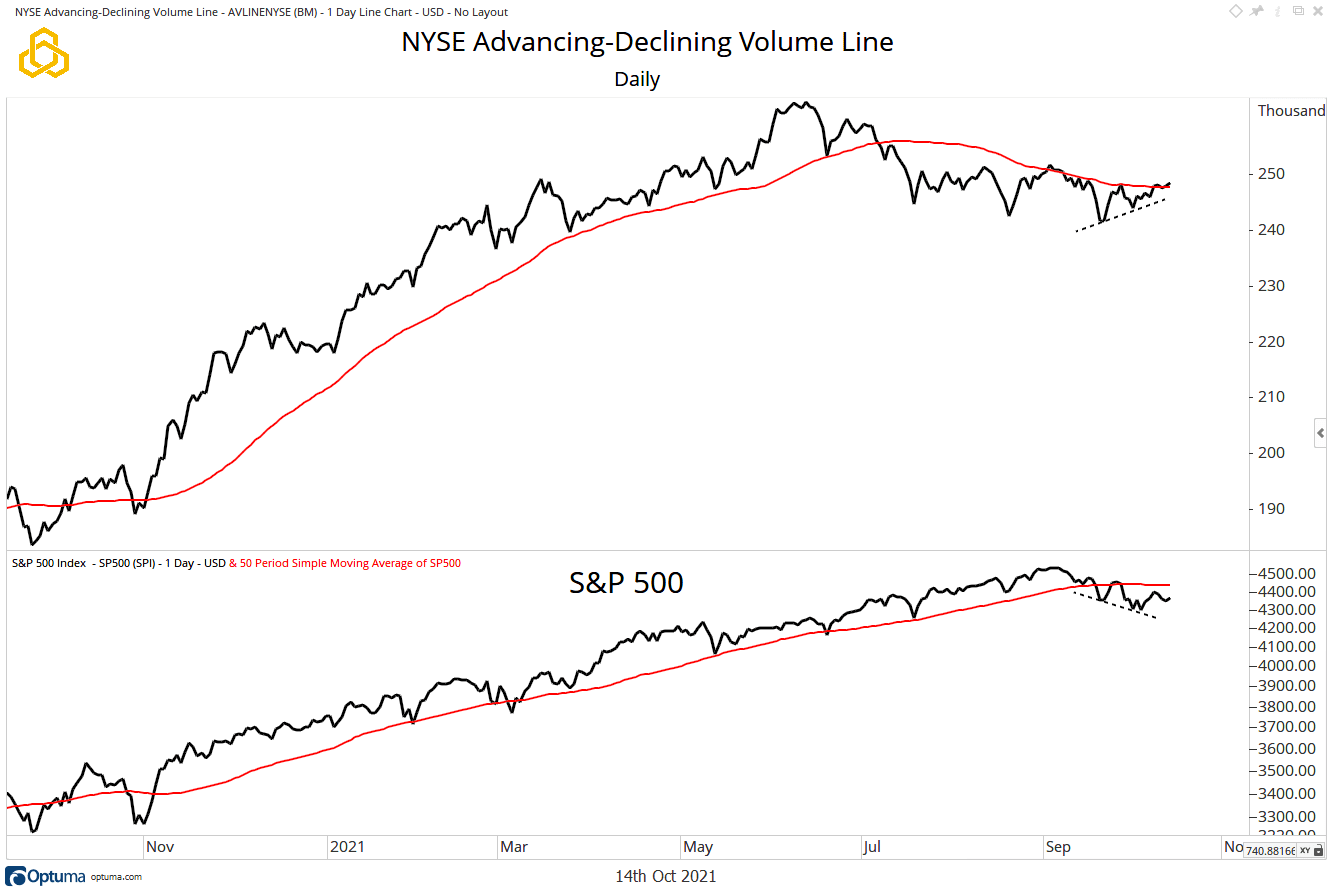
The 5-day moving averages of issues on the NYSE making new 52-week and six-month lows have moved sharply to the downside over the past week. This is a continuation of a trend that has been in place for much of the year, where spikes have been short-lived and not led to the types of buildup that signal breadth is deteriorating in a meaningful way.
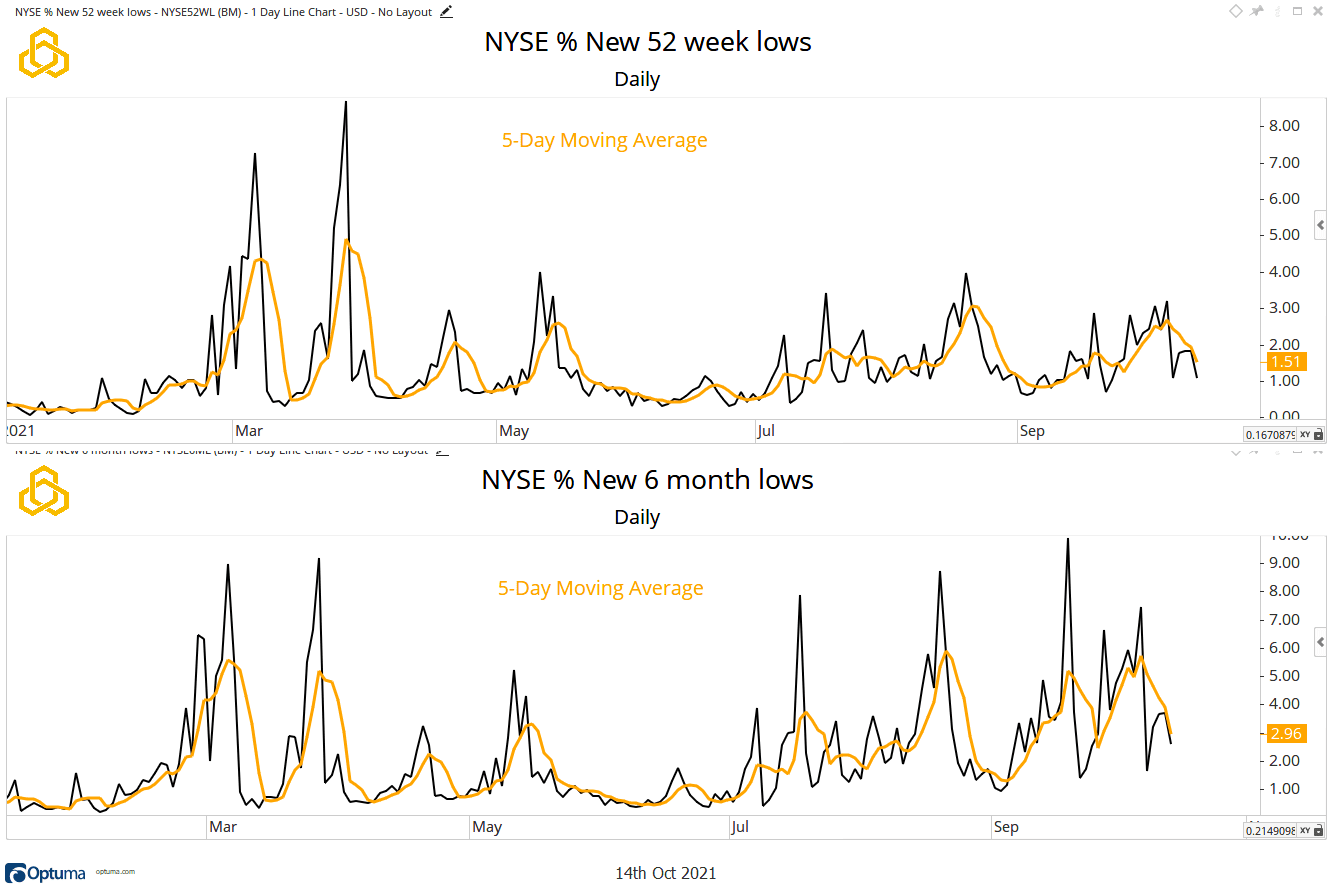
While we are encouraged by the lack of buildup in new lows, the 5-day moving averages of the percentage of NYSE issues making new six-month and 52-week highs could be better in our view. These metrics have not been able to sustain higher levels when they arise, which would be an important breadth signal for equities.
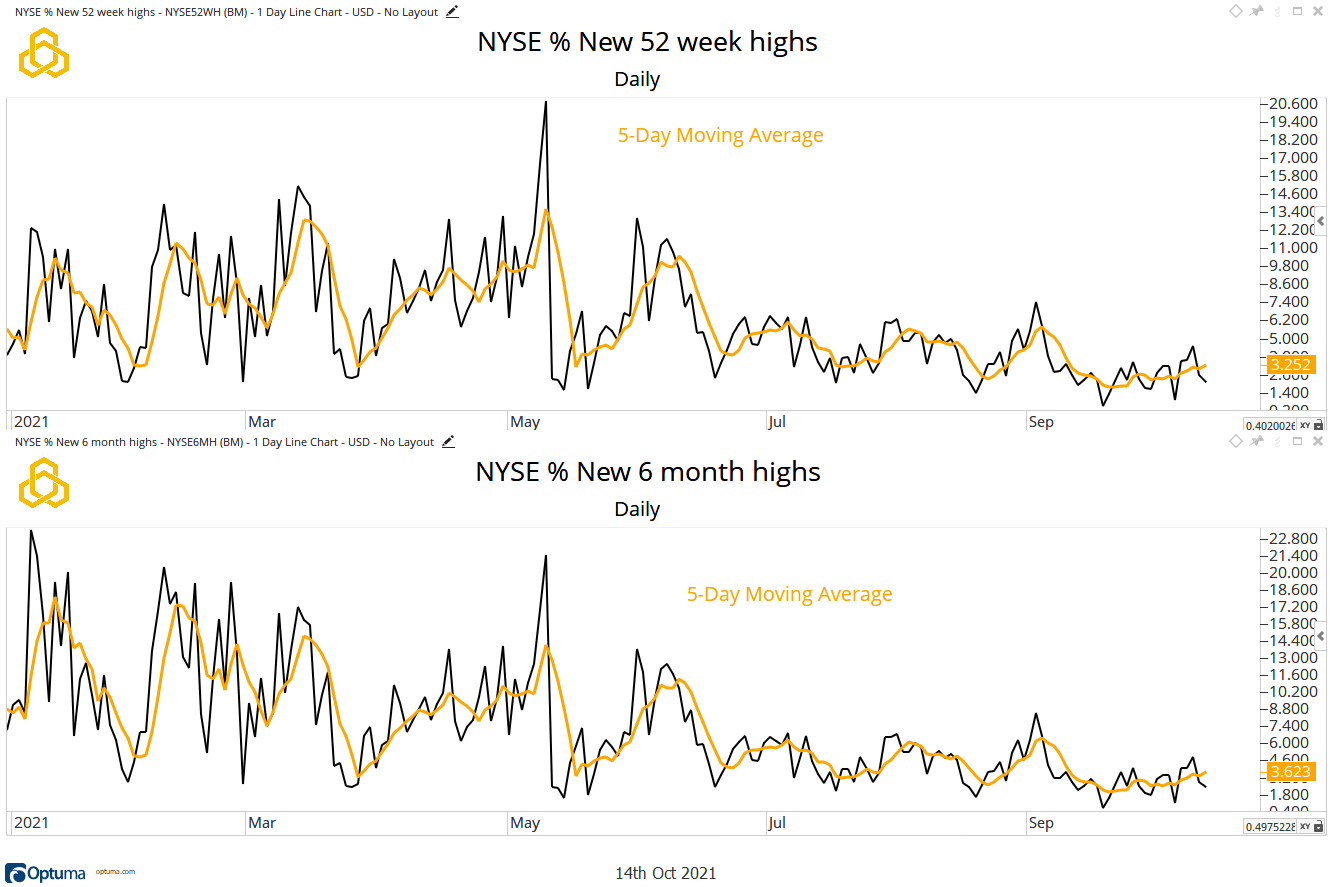
The percentage of stocks on the NYSE that are trading above their respective 200-day moving averages remains in a downtrend. There was a slight uptick from 43% to 46% on the week, but we want to see this metric improve to indicate that the long-term trend metrics are becoming more bullish as the index holds above its 200-day moving average.
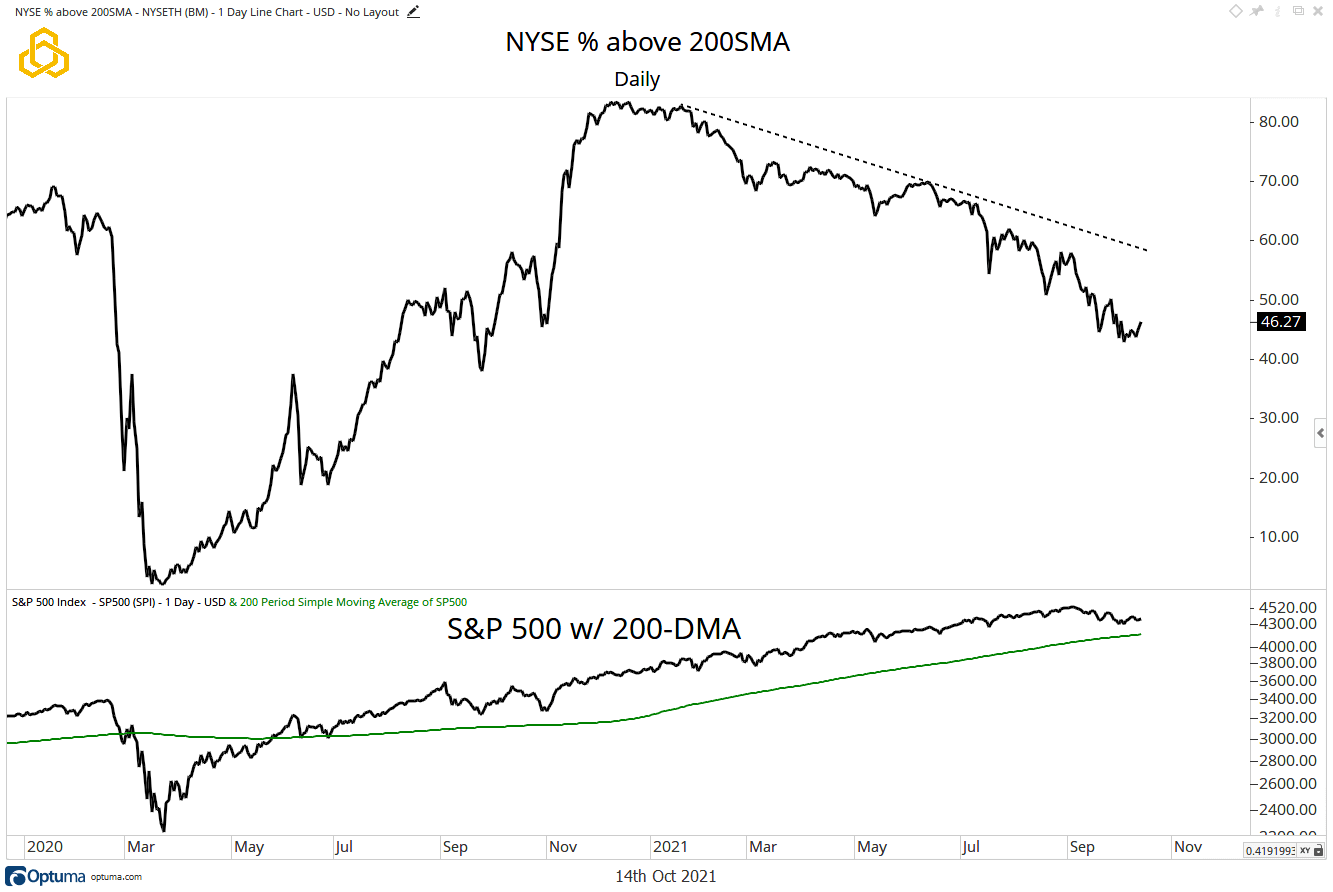
The percentage of issues on the NYSE trading above their 50-day moving averages moved from 36% to 44% this week as this metric continues to stabilize. A break above the September high would signal that the downtrend that has been in place since last May is reversing and increases the odds that the S&P 500 will break its 50-day moving average to the upside.
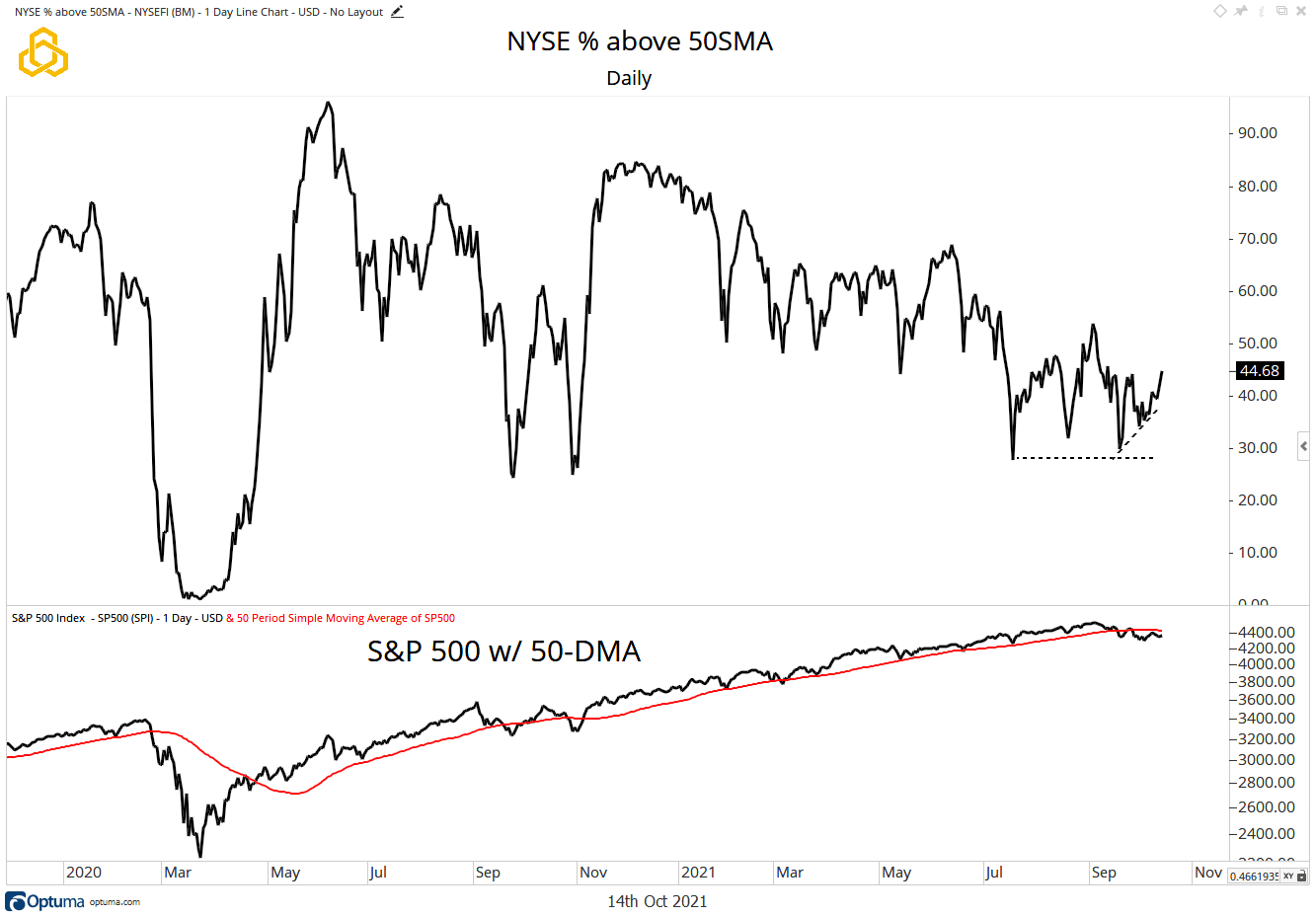
The percentage of stocks trading above their respective 20-day moving averages moved higher on the week, from 41% to 55%. This indicator continues to make higher lows. Odds favor the S&P 500 regaining its 20-day moving average in the near term.
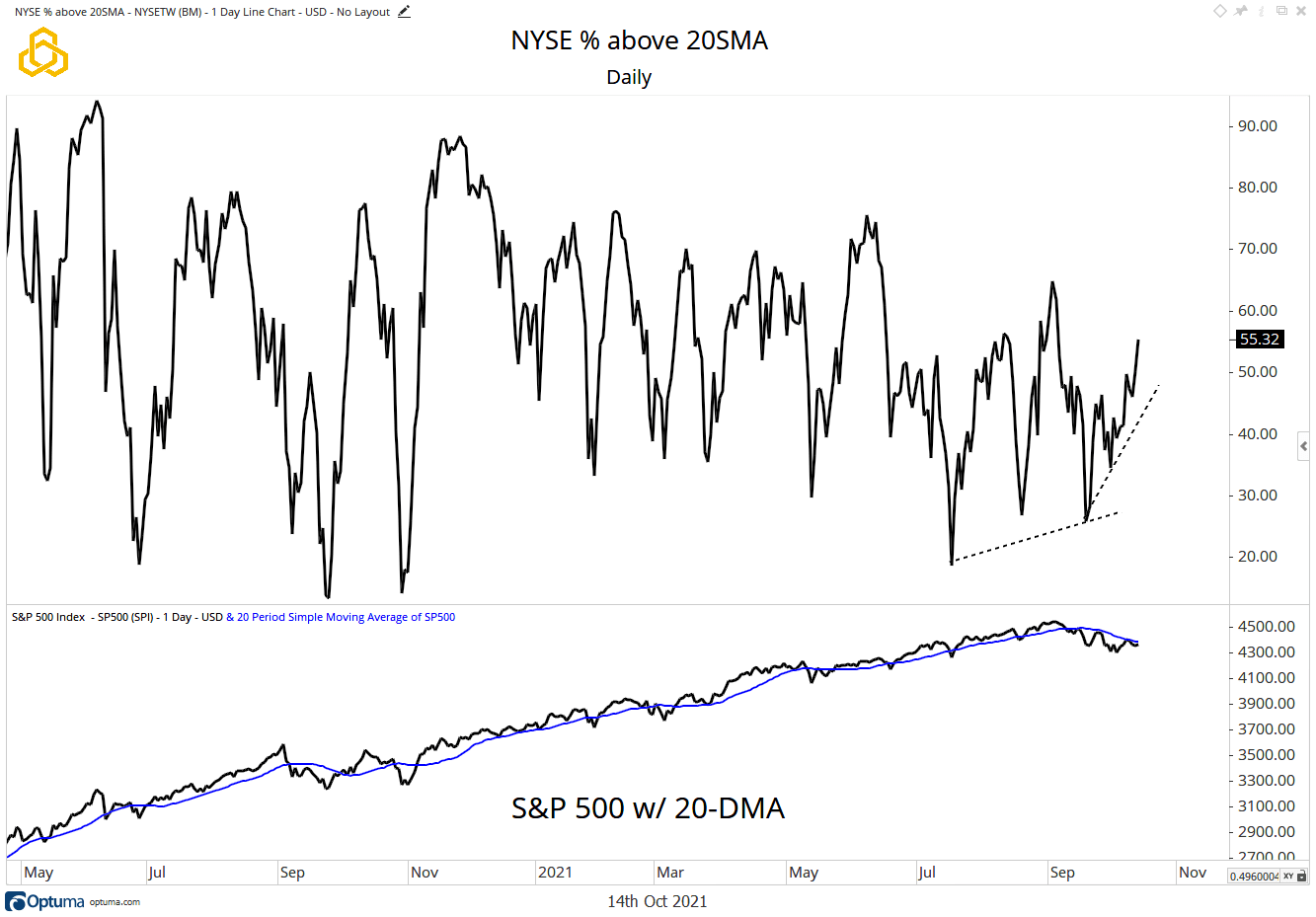
S&P 500 Breadth
Breadth metrics for the S&P 500 have changed little for the week, but we continue to see a slight improvement in the short and intermediate-term metrics.
- Advance/Decline Line: Below the 50-day moving average, making a higher low.
- Percent Above Their 200-Day Moving Average: 63% from 66% last week.
- Percent Above Their 50-Day Moving Average: 37% from 34% last week.
- Percent Above Their 20-Day Moving Average: 45% from 41% last week.
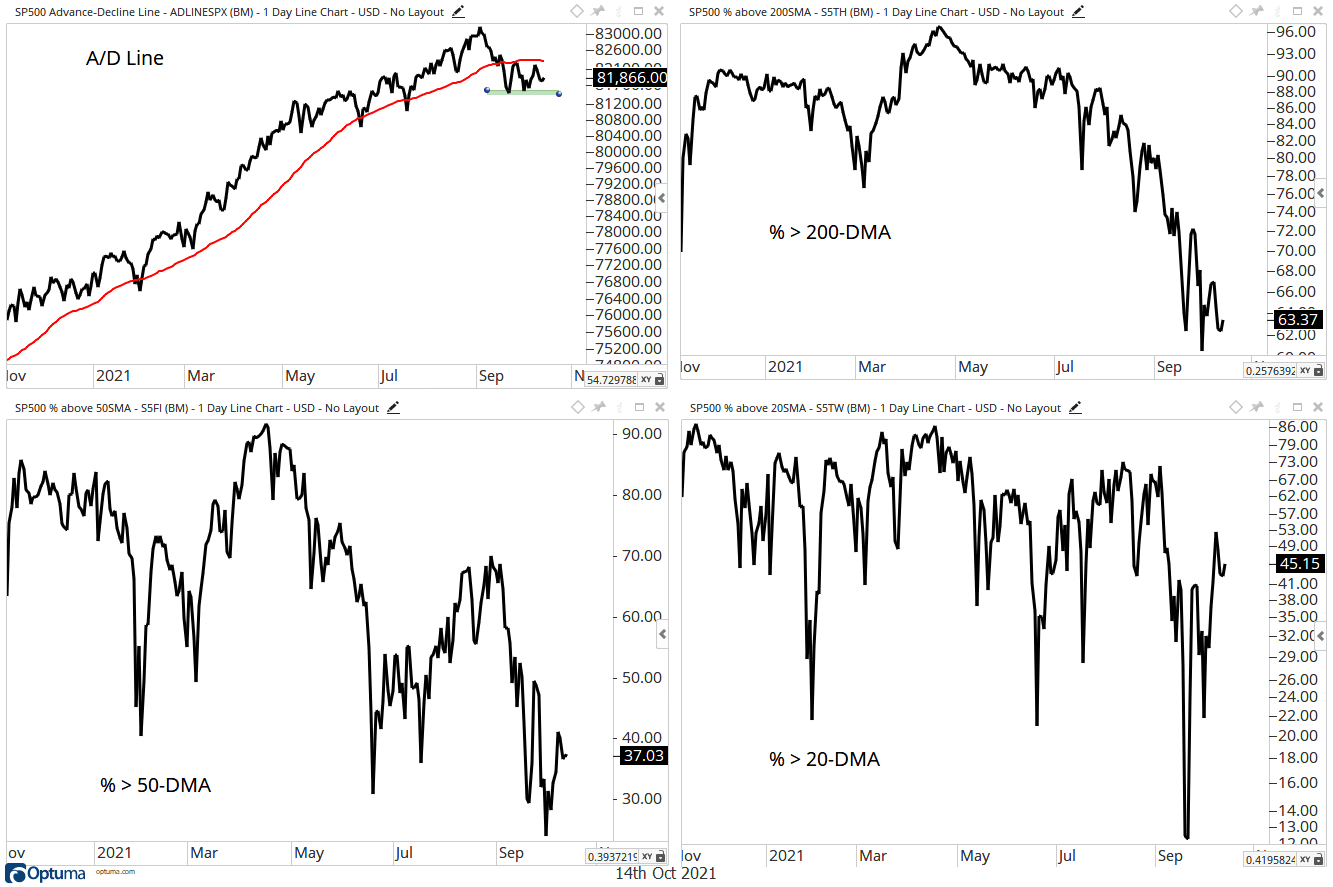
SmallCap Breadth
Breadth metrics for the S&P 600 Small Cap Index improved on the week, with the short and intermediate-term metrics outpacing the long-term data:
- Advance/Decline Line: Pushing on the 50-day moving average, looking for a break.
- Percent Above Their 200-Day Moving Average: 50% from 49% last week.
- Percent Above Their 50-Day Moving Average: 54% from 48% last week.
- Percent Above Their 20-Day Moving Average: 61% from 57% last week.
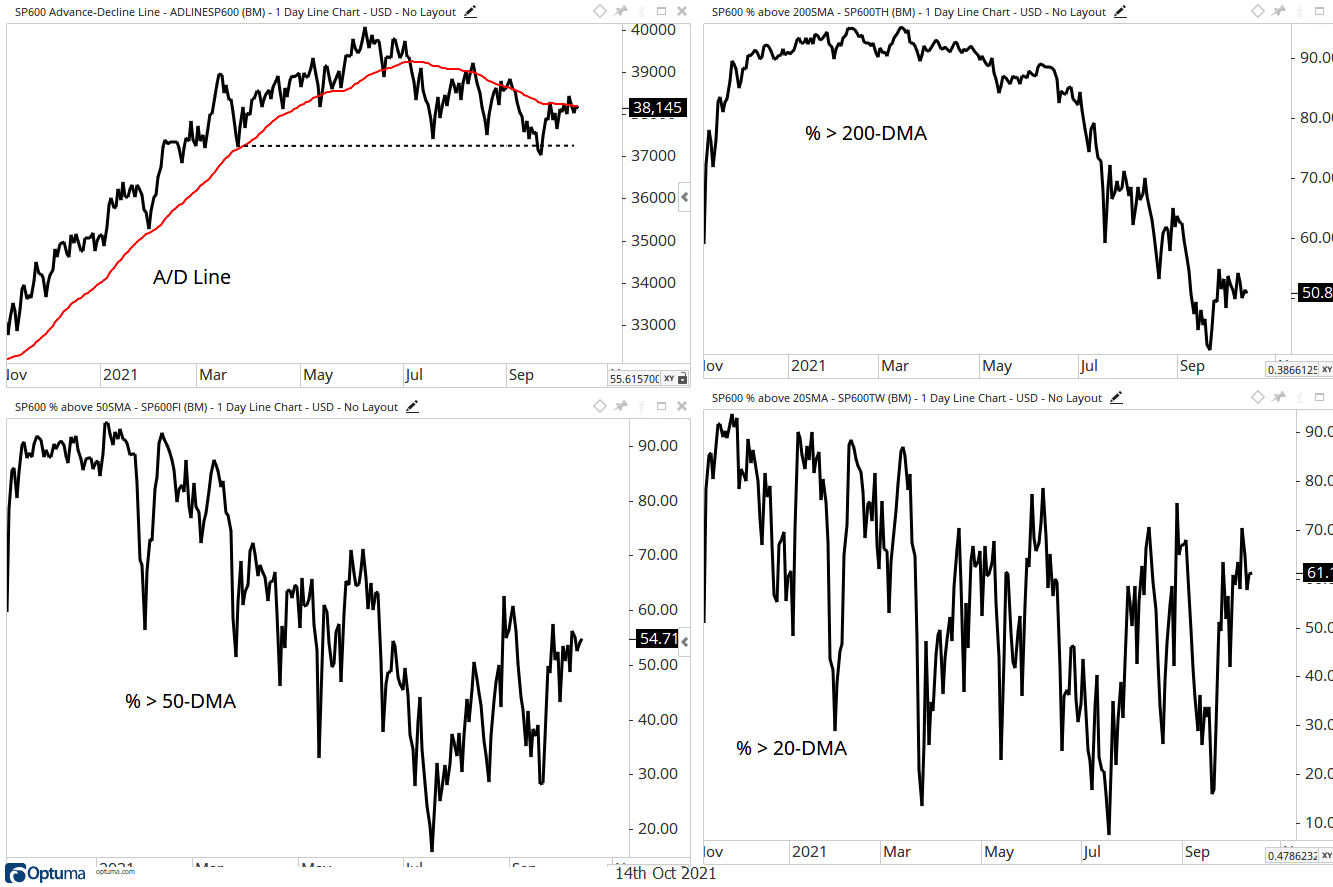
Take-Aways:
For a second consecutive week, breadth metrics have improved for the most part. Small Caps show the broadest improvement, followed by the NYSE. A large part of the bear case for equities has been weakening breadth for much of the year. As these metrics continue to move to the upside, that thesis will have to be rethought.
